Every year, improper storage humidity destroys millions of dollars worth of belongings across America. Your vintage guitar collection, important family documents, and grandmother’s antique furniture are all at risk from an invisible threat that silently damages stored items in enclosed spaces. Storage humidity – the amount of water vapor present in storage areas – can make the difference between keeping your valuables in pristine condition or watching them deteriorate beyond repair.
Whether you’re storing belongings in a climate controlled storage unit, your basement, or a traditional storage facility, understanding humidity control is essential for protecting your investments. This comprehensive guide will help you maintain proper humidity levels, identify warning signs of moisture problems, and implement effective solutions to keep your items safe from humidity damage.
What is Storage Humidity and Why It Matters
Storage humidity refers to the concentration of water vapor in the air within storage spaces, measured as relative humidity (RH) – the percentage of moisture in the air compared to the maximum amount that air can hold at a given temperature. This seemingly simple concept has profound implications for anyone storing valuable belongings.
When humidity levels climb above 60%, the risk of mold growth, mildew, rust, and warping increases dramatically. Materials like wood furniture absorb moisture from humid conditions, causing them to swell, warp, and potentially crack. Metal items develop corrosion within weeks when exposed to excess moisture, while paper documents and photographs can develop permanent stains and odors.
Conversely, when humidity drops below 30%, materials become brittle and prone to cracking. Leather goods lose their flexibility, wood can shrink and split, and even plastic items may become fragile. The key to maintaining a stable environment lies in finding the sweet spot between these extremes.
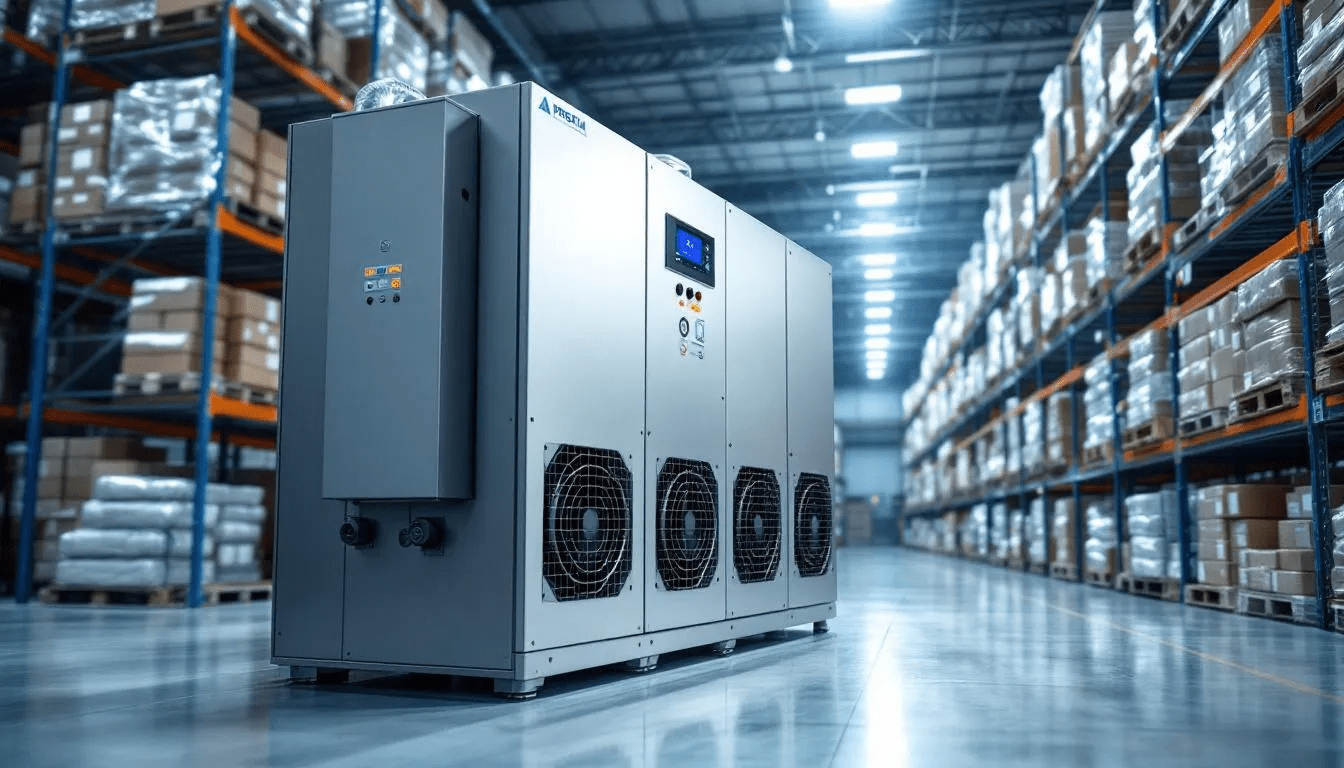
The financial impact of poor humidity control is staggering. Storage facilities across the United States report approximately $2.5 billion annually in insurance claims related to humidity damage. This figure represents not just monetary loss, but irreplaceable family heirlooms, important documents, and cherished collections that cannot be restored.
Geographic location plays a crucial role in storage humidity challenges. Florida and other Gulf Coast states experience 40% more humidity-related storage damage compared to arid regions like Arizona or Nevada. However, even traditionally dry climates can present humidity problems during certain seasons or in specific storage conditions.
Optimal Humidity Levels for Different Storage Needs
Understanding the ideal humidity ranges for different types of belongings is crucial for effective storage planning. The American Society of Heating, Refrigerating and Air-Conditioning Engineers (ASHRAE) provides industry standards that serve as the foundation for proper humidity management.
For general storage needs, maintaining relative humidity between 45-55% provides the best protection for most belongings. This range offers a buffer against both mold growth and material brittleness while being achievable in most storage environments. However, humidity can cause condensation inside self-storage units, which can result in mold and mildew issues if not properly managed.
Electronics and computers require more precise control, with optimal humidity levels between 40-50% RH. Higher humidity levels can cause condensation on cold surfaces inside electronic devices, leading to short circuits and corrosion of delicate components. Gaming consoles, smartphones, and laptops are particularly vulnerable to humidity damage. Additionally, electronics should be stored at a minimum of 30% RH to prevent electrostatic discharge (ESD), which can damage sensitive components.
Paper documents and books need humidity levels maintained between 35-45% RH. This relatively low range prevents mold and mildew while avoiding the brittleness that can occur when paper becomes completely dry. Birth certificates, diplomas, contracts, and other important documents require this careful balance to remain readable and legally valid.
Leather goods and furniture perform best in 45-55% humidity ranges. Leather needs enough moisture to maintain its flexibility and prevent cracking, but too much humidity can promote mold growth and cause permanent staining. Quality leather items can last decades when stored in proper conditions.
Musical instruments, particularly those with wooden components, require humidity levels between 40-50% RH. Guitars, violins, and pianos can suffer permanent damage from humidity fluctuations. Wood can crack in dry conditions, while metal strings and hardware develop corrosion in humid environments.
Artwork and antiques need the most stable conditions, with humidity maintained at 45-55% RH and daily fluctuations limited to no more than 5%. These valuable pieces often represent significant financial and emotional investments that require professional-grade humidity control systems.
Items Most Vulnerable to Humidity Damage
Certain belongings face particularly high risks from improper storage humidity, requiring special attention and protective measures. Understanding which items are most vulnerable helps prioritize your humidity control efforts and storage strategies. Humidity-controlled storage units are the best way to protect items like photos and furniture from damage, ensuring their longevity and condition.
Electronics represent one of the highest-risk categories for humidity damage. Smartphones, laptops, gaming consoles, and other electronic devices can develop internal corrosion when exposed to humidity levels above 60%. The moisture causes oxidation of circuit boards and metal components, often resulting in permanent failure. Even brief exposure to high humidity can compromise electronic devices that appear to function normally initially.
Photographs and negatives, especially vintage film materials, degrade rapidly when humidity exceeds 50%. The emulsion layers on film can separate, colors can shift permanently, and adhesive backing may fail. Family photo collections representing decades of memories can become irreparably damaged in surprisingly short time periods.
Important documents face dual threats from humidity extremes. Too much moisture promotes mold growth that can make text illegible, while too little moisture makes paper brittle and prone to tearing. Birth certificates, diplomas, insurance policies, and legal contracts stored in improper conditions may become legally questionable due to physical deterioration.
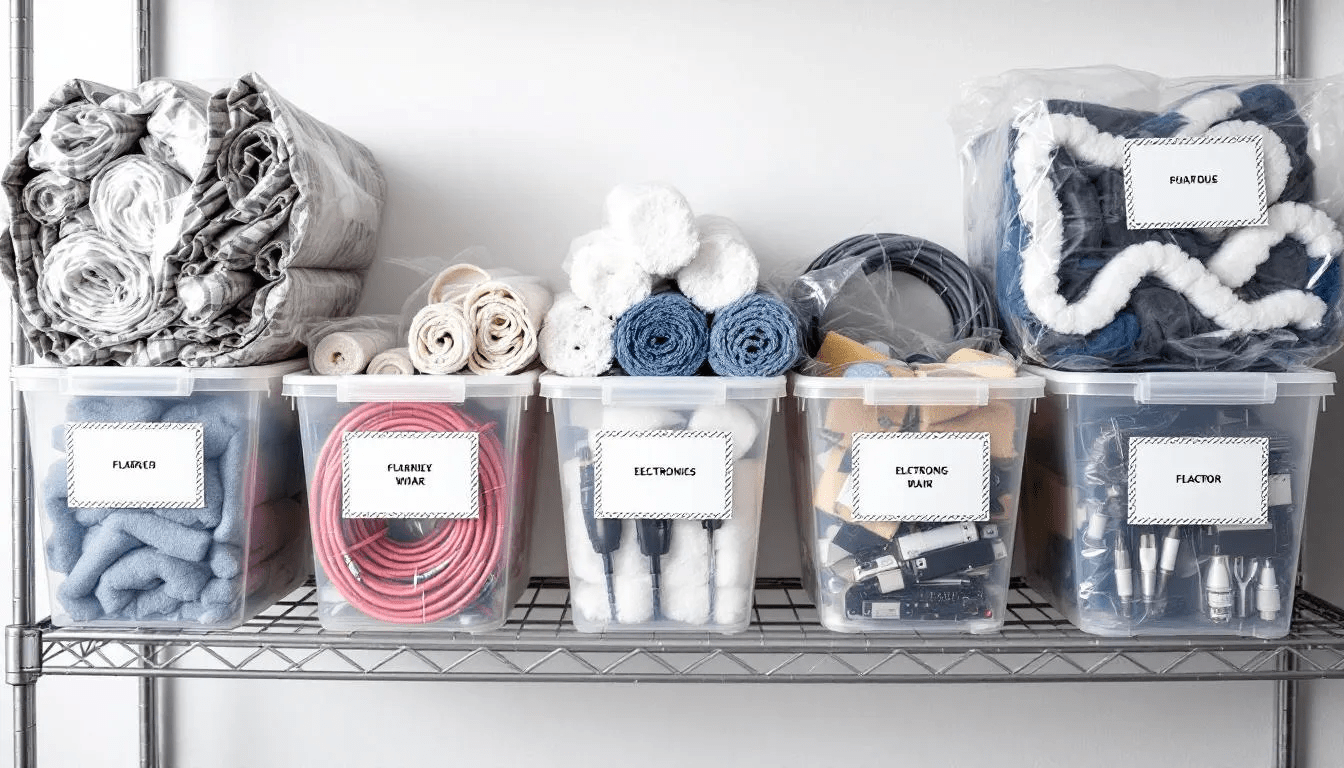
Clothing and textiles, particularly natural fibers like wool, cotton, and silk, readily absorb humidity from their surroundings. High moisture levels promote mildew growth that creates permanent odors and stains. Wedding dresses, vintage clothing, and fabric collections require careful humidity management to prevent irreversible damage.
Wooden furniture, especially antique pieces, shows visible damage relatively quickly in improper humidity conditions. Wood expansion and contraction from humidity fluctuations can cause joints to loosen, finishes to crack, and surface mold to develop. Solid wood furniture may warp beyond repair when exposed to sustained high humidity.
Metal items including tools, jewelry, collectibles, and sporting equipment develop rust and corrosion rapidly in humid storage conditions. Even items with protective coatings can suffer damage if humidity levels remain elevated for extended periods.
Signs of Humidity Problems in Storage
Recognizing the early warning signs of humidity problems can prevent minor issues from becoming major damage. Regular inspection of your storage area and stored items helps identify problems before they cause irreversible harm.
Visual indicators provide the most obvious signs of humidity problems. Condensation appearing on walls, windows, or container surfaces indicates humidity levels are too high for the current temperature. This moisture creates ideal conditions for mold growth and material damage. Musty odors often accompany high humidity and typically indicate mold or mildew has already begun developing, even if not yet visible.
Visible mold spots appearing as dark patches on walls, containers, or stored items represent advanced humidity problems requiring immediate attention. Mold can spread rapidly in favorable conditions and can cause permanent damage to organic materials.
Item damage provides clear evidence of humidity problems affecting your belongings. Rust appearing on metal items, warped wood surfaces, and water stains on cardboard boxes all indicate moisture levels have exceeded safe limits. These visible changes often represent only the tip of the iceberg, with more extensive damage potentially hidden inside containers or furniture.
Pest activity increases significantly in high-humidity environments. Silverfish, carpet beetles, and book lice thrive in conditions above 65% relative humidity. These pests not only indicate humidity problems but can cause additional damage to paper, fabric, and organic materials.
Temperature correlation plays a crucial role in humidity problems. When storage areas reach 80°F combined with 70% humidity, conditions become ideal for rapid mold growth. This combination can cause visible mold development within 24-48 hours on susceptible materials.
Seasonal patterns in humidity complaints help identify systemic problems. Storage facilities typically see three times more humidity-related complaints during spring and summer months when outdoor humidity levels peak and temperature fluctuations stress storage systems.
Professional Humidity Control Solutions
Commercial-grade humidity control systems offer the most reliable protection for valuable belongings in storage facilities and large storage areas. These professional solutions provide precise control and monitoring capabilities that far exceed residential-grade equipment.
Santa Fe dehumidifiers represent the gold standard for commercial storage applications. The Ultra98 model removes 98 pints of moisture per day while operating efficiently in temperatures down to 33°F. These units are specifically designed for the challenging conditions found in storage facilities, including unheated spaces and areas with limited air circulation.
Quest CDG174 units provide ducted dehumidification systems capable of serving storage areas exceeding 3,000 square feet. These systems integrate with existing HVAC infrastructure to maintain consistent humidity levels across multiple storage units simultaneously. The ducted design allows humidity control without placing equipment inside individual storage areas.
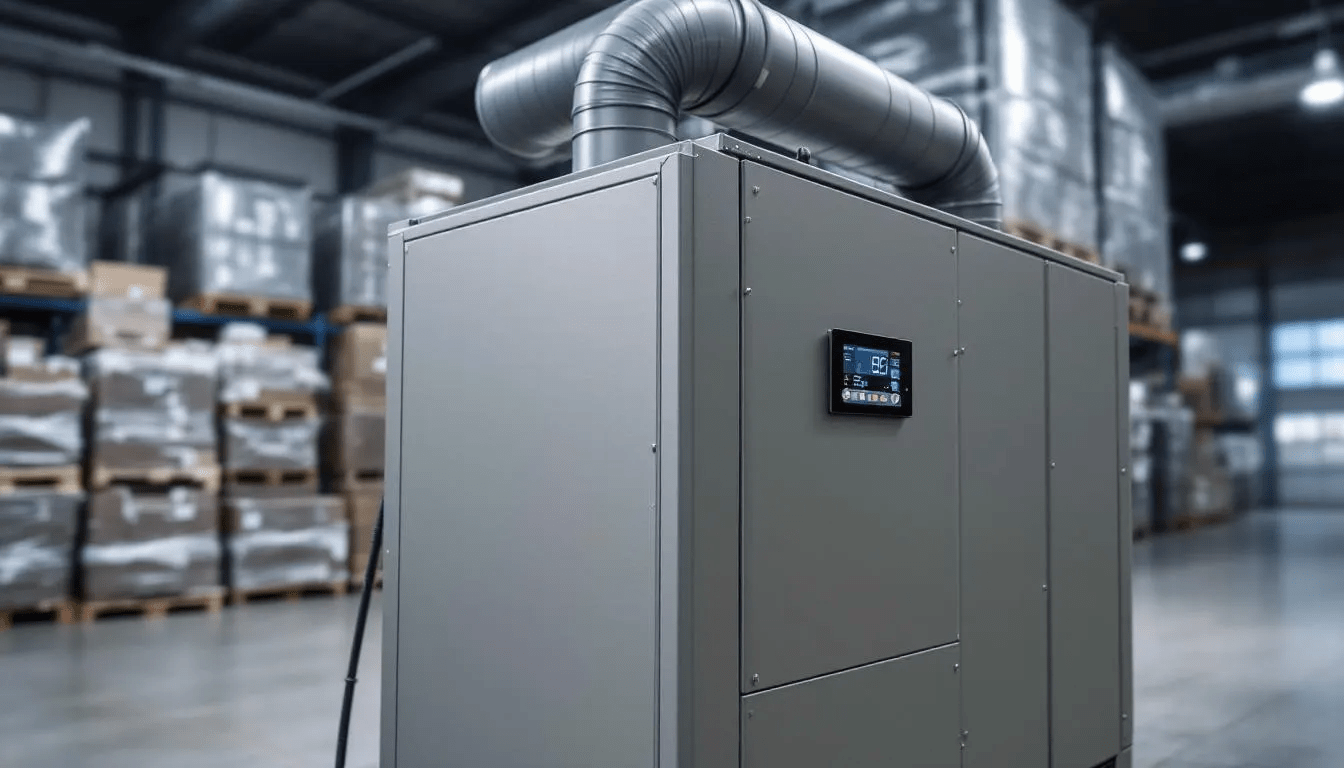
Whole-building HVAC integration represents the most comprehensive approach to humidity control. These systems maintain 50% relative humidity across 50 or more individual storage units by treating the entire building as a controlled environment. Advanced sensors monitor conditions throughout the facility, automatically adjusting dehumidification capacity to maintain optimal conditions.
Installation costs for commercial dehumidification systems typically range from $3,000 to $8,000 depending on the size of the storage area and complexity of the installation. While this represents a significant upfront investment, the systems pay for themselves by preventing humidity damage and reducing insurance claims.
Energy efficiency has become a major consideration in professional humidity control systems. ENERGY STAR certified units can reduce operating costs by 30% compared to older models while providing superior performance. Modern systems include programmable controls that optimize operation based on outdoor conditions and storage requirements.
Portable Dehumidifier Options
Portable dehumidifiers offer flexible humidity control solutions for individual storage units and smaller storage areas. These units provide professional-grade protection without the complexity and cost of whole-building systems.
The Frigidaire FFAP7033T1 removes 70 pints of moisture per day, making it ideal for individual 10×20 storage units. This capacity handles the moisture load from most personal storage applications while operating quietly and efficiently. The unit includes automatic humidity controls that maintain preset levels without constant adjustment.
For budget-conscious applications, the hOmeLabs HME020031N offers reliable moisture removal at 30 pints per day. This capacity suits smaller storage spaces and provides adequate protection for moderately valuable belongings. The compact design fits easily in storage areas without taking up significant floor space.
Basement and garage storage applications typically require 50-70 pint daily capacity to maintain proper humidity levels. These spaces often have additional moisture sources from concrete floors and walls that increase the dehumidification load beyond what smaller units can handle effectively.
Auto-shutoff features prevent overflow damage when collection tanks reach capacity. This safety feature is essential in storage applications where units may operate unattended for extended periods. Some models include drain hose connections that eliminate the need for manual tank emptying.
DIY Humidity Control Methods
Cost-effective moisture control solutions can provide adequate protection for many storage applications without the expense of professional equipment. These DIY methods work particularly well in smaller storage spaces and for belongings that don’t require precise humidity control.
Silica gel packets offer targeted moisture protection for enclosed containers and small storage areas. One gram of silica gel can absorb up to 40% of its weight in moisture, providing localized protection for sensitive items. These packets can be reactivated by heating in a low oven, making them reusable for long-term storage applications. Desiccants like silica gel packets are an effective way to absorb moisture from the air and keep storage containers dry.
Calcium chloride containers like DampRid products provide continuous moisture absorption for 60-90 days per container. These systems work particularly well in storage areas without electricity where powered dehumidifiers cannot operate. The containers require periodic replacement but offer reliable protection at low cost.
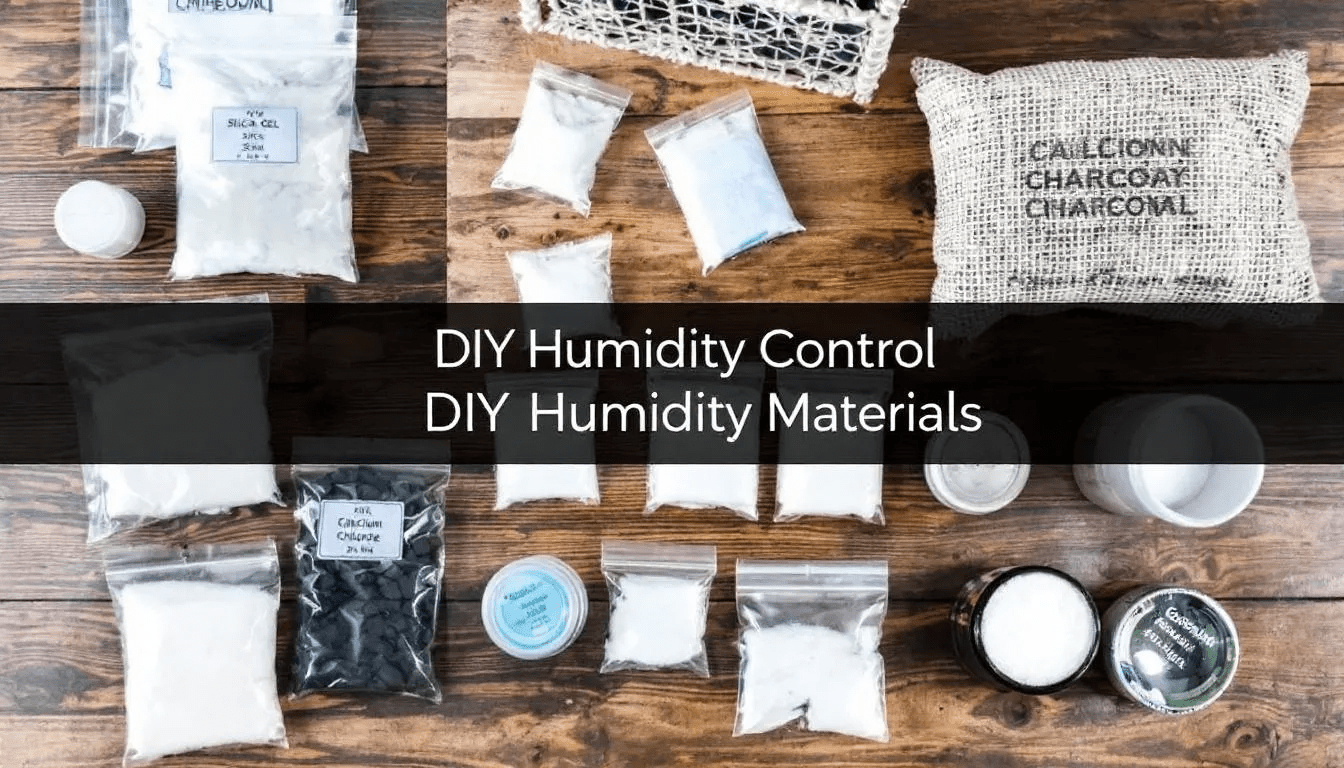
Activated charcoal serves dual purposes by controlling both humidity and odors in storage spaces. Bamboo charcoal bags can be recharged monthly by placing them in direct sunlight, making them an environmentally friendly option for long-term storage applications.
Vapor barriers prevent ground moisture from infiltrating storage areas built on concrete slabs or dirt floors. Six-mil plastic sheeting installed under stored items and around storage area walls blocks moisture transmission from the ground. This simple measure can significantly reduce humidity problems in basement and garage storage areas.
Ventilation fans provide active air movement that helps reduce humidity levels and prevents stagnant air conditions. Four-inch exhaust fans moving 100 cubic feet per minute (CFM) can effectively reduce humidity in storage areas by promoting air exchange with drier outside air when conditions are favorable.
Smart Fog Advantages for Humidity Control
An emerging and highly effective solution for humidity management in storage spaces is the use of smart fog systems. These advanced systems release a fine, controlled mist that helps regulate humidity levels precisely and evenly throughout the storage area.
Smart fog systems offer several advantages:
- Uniform Humidity Distribution: Unlike traditional dehumidifiers that may create pockets of dry or moist air, smart fog ensures consistent humidity control by dispersing moisture evenly, preventing localized damage.
- Energy Efficiency: Smart fog systems use minimal water and energy compared to large-scale HVAC or dehumidification units, making them a durable and cost-effective option for long-term storage needs.
- Rapid Response: These systems can quickly adjust humidity levels in response to real-time sensor data, maintaining the ideal environment even during sudden changes in temperature or moisture.
- Reduced Risk of Leaks: Because smart fog releases controlled micro-droplets, the risk of leaks or water pooling is significantly minimized, protecting stored items from direct moisture exposure.
- Pest Deterrence: Maintaining stable humidity with smart fog can help reduce pest infestations by eliminating the damp conditions that attract insects such as silverfish and book lice.
Integrating smart fog technology with modern monitoring systems provides a proactive approach to maintaining proper humidity levels, ensuring your belongings remain safe and in pristine condition.
Container and Packaging Strategies
Proper container selection and packaging techniques create additional barriers against humidity damage while complementing environmental humidity control measures. The right containers can protect items even when storage area humidity levels fluctuate beyond ideal ranges.
Airtight containers provide the first line of defense against humidity infiltration. Rubbermaid Brilliance and OXO POP container systems feature silicone seals that create watertight barriers around stored items. These containers maintain their own internal humidity levels independent of surrounding conditions when properly sealed.
Vacuum storage bags remove both air and moisture from around stored items, particularly effective for clothing and textiles. Space Saver Premium bags can remove 75% of the air volume while creating an oxygen-free environment that prevents mold growth and insect damage. These bags work especially well for seasonal clothing storage.
Acid-free boxes provide superior protection for documents and photographs compared to standard cardboard containers. Gaylord Archival products use pH-neutral materials that won’t contribute acids that accelerate paper deterioration. These specialized containers often include internal folders and supports designed for specific document types.
Mylar barrier bags offer NASA-grade protection for electronics and other moisture-sensitive items. These metallized plastic bags block moisture transmission while providing anti-static protection for electronic components. The bags can be heat-sealed for long-term storage applications.
Avoiding cardboard containers in humid conditions prevents container failure and contamination of stored items. Standard corrugated boxes readily absorb 20-30% humidity from surrounding air, often becoming structurally weak and developing mold growth that can spread to stored contents.
Monitoring and Measurement Tools
Accurate humidity monitoring forms the foundation of effective humidity control strategies. Modern monitoring equipment provides real-time data and historical trends that help optimize storage conditions and identify problems before they cause damage.
Digital hygrometers like the ThermoPro TP50 display real-time humidity readings with accuracy typically within 2-3% of actual conditions. These affordable instruments provide immediate feedback on humidity control efforts and help identify areas needing attention. Many models include minimum and maximum reading memory to track humidity fluctuations over time.
Data loggers such as the Onset HOBO MX1101 record humidity measurements over weeks or months, creating detailed histories of storage conditions. These devices can operate remotely and download data wirelessly to smartphones or computers for analysis. Historical data helps identify patterns and optimize humidity control system operation.
Smart sensors like SensorPush wireless monitoring systems send real-time alerts to smartphones when humidity levels exceed preset thresholds. These systems enable immediate response to humidity problems even when storage areas are unattended for extended periods. Multiple sensors can monitor different zones within larger storage areas.
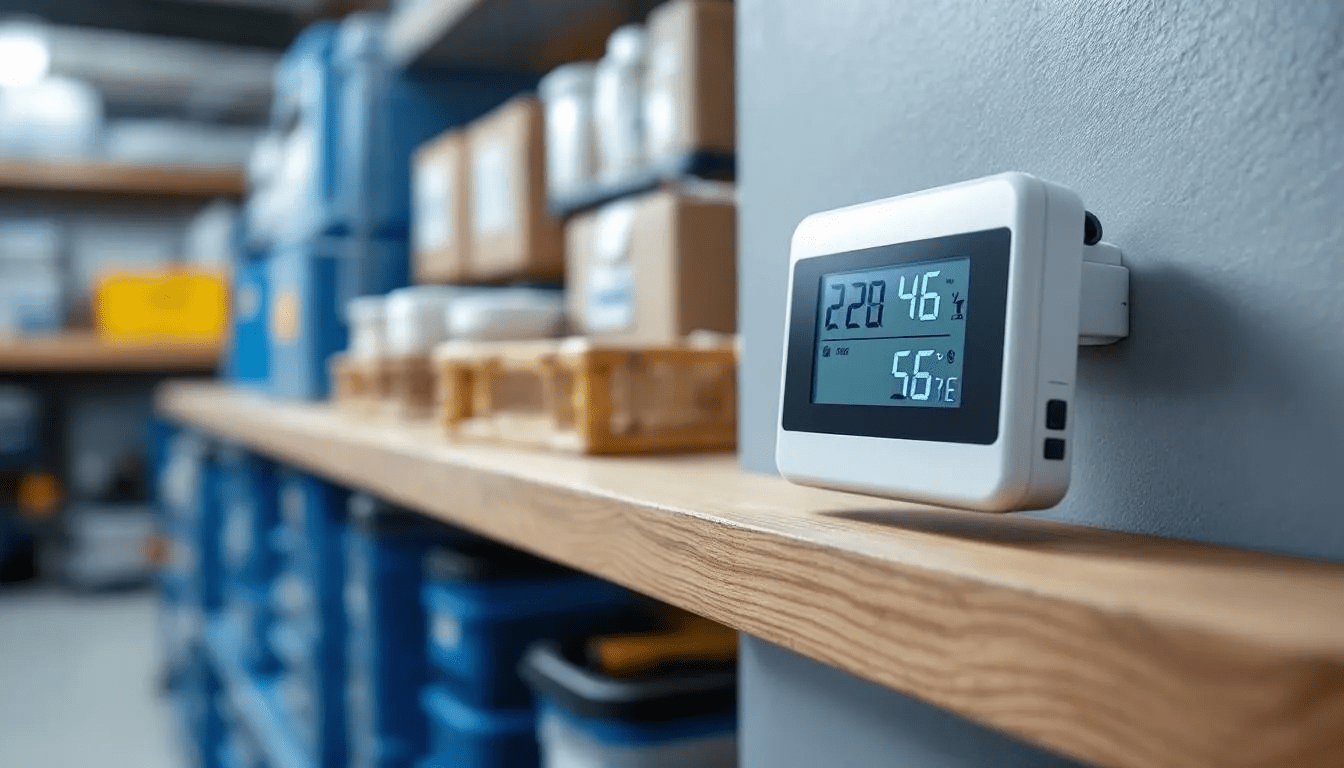
Calibration ensures measurement accuracy over time and should be performed monthly using the salt test method. This simple procedure creates a known 75% RH environment for checking instrument accuracy. Sensors showing readings outside the 73-77% range during salt testing require recalibration or replacement.
Proper sensor placement affects measurement accuracy and usefulness. Position instruments 3-4 feet above floor level and away from walls and heat sources to get representative readings of air conditions throughout the storage space. Avoid locations near doors or windows where readings may not reflect overall storage conditions.
Climate-Controlled Storage vs. Traditional Units
Understanding the differences between climate-controlled and traditional storage units helps make informed decisions about protection levels and costs for stored belongings. The choice often comes down to balancing protection benefits against additional rental costs. Controlled humidity storage units maintain healthy humidity levels using HVAC systems and commercial-grade dehumidifiers, offering superior protection for sensitive items.
Climate control systems maintain both temperature and humidity within specified ranges year-round. These systems typically keep storage units between 55-85°F and 30-50% relative humidity regardless of outdoor weather conditions. HVAC systems continuously monitor and adjust conditions to prevent the fluctuations that cause most storage damage.
Cost differences between climate-controlled and traditional units average $50-100 more per month depending on unit size and location. While this represents a significant ongoing expense, the protection value becomes clear when considering replacement costs for damaged belongings. Climate control essentially provides insurance against environmental damage.
Protection value statistics show that climate-controlled units prevent approximately 90% of humidity-related damage according to industry data. This dramatic reduction in damage rates makes climate control cost-effective for anyone storing belongings worth more than a few thousand dollars.
Indoor versus outdoor unit location affects humidity stability even within climate-controlled facilities. Indoor climate units typically maintain more stable conditions because they’re protected from direct solar heating and weather exposure that can stress HVAC systems.
ROI calculations show that climate control pays for itself when storing belongings worth $2,000 or more. The additional monthly cost over typical storage periods rarely exceeds the replacement value of items protected from humidity damage. For valuable collections or irreplaceable items, climate control represents essential protection rather than optional convenience.
Seasonal Humidity Management
Seasonal weather patterns create predictable challenges for storage humidity control that require proactive management strategies. Understanding these patterns helps optimize humidity control systems and prevent damage during high-risk periods.
Summer presents the greatest humidity challenges across most of the United States. July and August typically see humidity peaks reaching 80-90% in southeastern states, overwhelming basic humidity control measures. Storage facilities report the highest number of humidity-related problems during these months when outdoor moisture loads stress dehumidification systems.
Winter brings opposite challenges as heating systems can drop indoor humidity below 20%, causing brittleness in stored materials. Wooden items may crack and paper documents can become fragile during extended cold periods. Many storage facilities require humidification systems during winter months to prevent over-drying.
Spring preparation becomes crucial for preventing mold growth from winter condensation accumulation. March inspections should identify any moisture problems that developed during winter heating cycles before warm weather promotes rapid mold development. Early spring represents the optimal time for deep cleaning and humidity system maintenance.
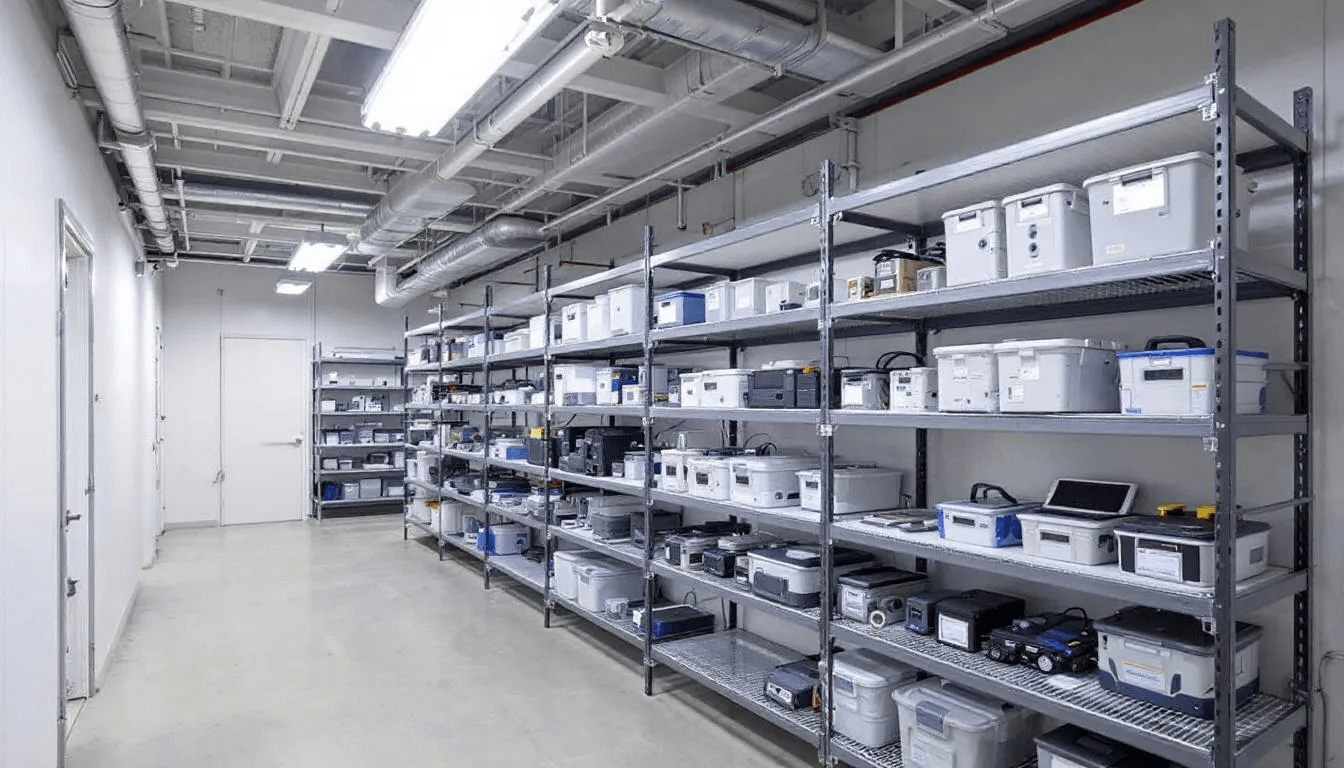
Fall transitions require adjustments to humidity control systems as outdoor conditions change rapidly. October humidity drops often require switching from dehumidification to humidification mode in climate-controlled facilities. This seasonal transition period challenges both automated and manual humidity control systems.
Regional variations require different seasonal strategies across the country. Pacific Northwest storage faces year-round high humidity requiring constant dehumidification, while Southwest storage deals with extremely dry conditions needing humidification during winter months. Coastal areas experience more stable humidity but face salt air corrosion challenges.
Emergency Humidity Response
Water intrusion events and sudden humidity spikes require immediate response to minimize damage and prevent long-term problems. Having emergency procedures in place can mean the difference between minor cleanup and total loss of stored belongings.
Flood recovery must begin within 24-48 hours to prevent mold growth on water-damaged materials. This narrow window requires rapid assessment and response capabilities that many storage operators struggle to provide during widespread weather events. Delayed response often results in total loss of affected items.
Immediate actions following water intrusion include removing wet items from affected areas, increasing ventilation to promote drying, and deploying emergency dehumidifiers to reduce ambient humidity. These steps can prevent secondary damage to items that weren’t directly water-damaged but are threatened by elevated humidity levels.
Professional services like ServPro and similar disaster restoration companies offer emergency humidity restoration for large-scale problems. These companies deploy industrial-grade equipment and expertise that exceeds what most storage facilities can provide in-house. Emergency services typically cost $2,000-5,000 but can save much more in prevented damage.
Insurance claims for humidity damage require documentation with photographs and moisture readings to establish the extent of loss. Many insurance policies have specific requirements for reporting timeframes and mitigation efforts that affect claim settlements. Proper documentation during emergency response supports later insurance claims.
Prevention planning should include humidity alarm systems and emergency contact procedures to enable rapid response even when storage areas are unattended. Automated alert systems can notify facility managers and tenants of dangerous humidity levels before damage occurs, often preventing emergencies through early intervention.
Understanding storage humidity control protects your valuable belongings while providing peace of mind that your investments remain in pristine condition. Whether you choose professional humidity control systems, DIY methods, or climate-controlled storage facilities, taking action to manage humidity levels is essential for preserving everything from family heirlooms to important documents.
The key to success lies in matching your humidity control approach to your specific storage needs and budget. Start by assessing what you’re storing, measure current humidity levels in your storage space, and implement appropriate control measures before damage occurs. Remember that preventing humidity problems costs far less than replacing damaged belongings, making humidity control one of the best investments you can make in protecting your stored items.



